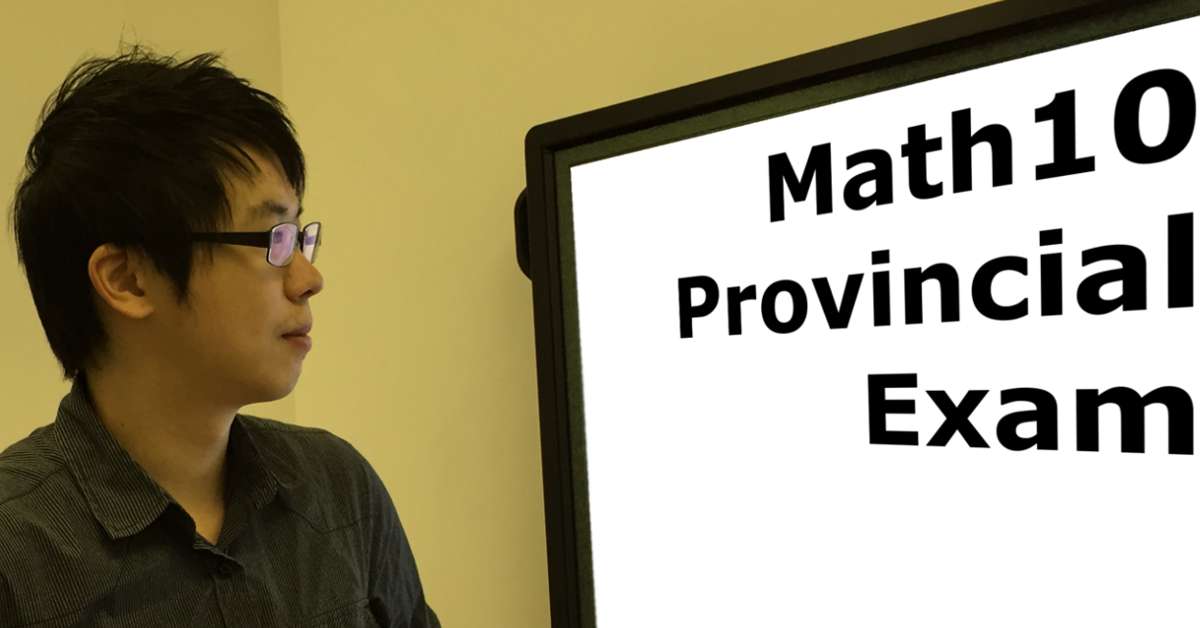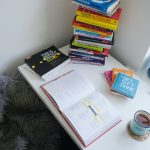Did you know 1 out of every 6 students failed their math 10 provincial exam?
No worries! Here’s a study guide on how you can get ready and a good grade in the exam.

10 must-know facts about BC math 10 provincial exams
- All students who are in grade 10 and live in British Columbia are all required to take the provincial exams.
- BC provincial exams actually take place in almost two months.
- About one third of the students only got a C- or even fail their math 10 provincial exam! (Better start studying for the exams early).
- Don’t memorize all the formulas and equations! You will be provided with data pages during the exam.
- Only dedicated calculators are allowed and must be inspected by a teacher before the exam. (Check out the Calculator Policy for detail.)
- You can check you marks on EdAccess with your Personal Education Number (PEN) on the Ministry of Education website.
- The mark from provincial exam is worth 20% of your Math 10 final mark.
- Students can rewrite the provincial exams only once after 12 months of writing it the first time. After the second attempt, the student needs to retake the course so that he/she can rewrite the exam again.
- If you have taken the exam more than one time, the Ministry of Education will only take whichever mark is higher.
- If you have questions about the mark, you can request a re-marking through your school office.
How will it look like?
|
Types of Questions |
No. of Questions | Time-allowed | Worth |
Calculator permitted (Y/N) |
|
|
Part A |
Multiple-choice | 12 | 40 minutes | 20% | N |
| Part B | Multiple-choice | 42 | 75 minutes | 70% |
Y |
| Part C | Numeric-response | 6 | 15 minutes | 10% |
Y |
*You will also be given data pages. (So you don’t need to memorize all the formulas!)
What will it cover?
|
Topics |
No. of Questions |
|
A: Measurement |
15 |
| B: Algebra and Number |
18 |
| C: Relations and Functions |
27 |
Descriptions of topics
(Click on the links for FREE math help videos 🙂)
A: Measurement
A1 – Linear Measurement
- What are SI and imperial units
- estimate strategies
- measurement strategies, use instruments like rulers, calipers and measuring tape.
A2 – Conversions within/between SI and imperial units
- How to convert among imperial units
- How to convert among matric systems
- How to convert between metric and imperial systems
A3 – Find the surface area and volume of 3-D object
- How to find the surface area and volume of cones
- How to find the surface area and volume of right cylinders
- How to find the surface area and volume of right prisms
- How to find the surface area and volume of pyramids
- How to find the surface area and volume of spheres
A4 – Solve problems using trigonometric ratios (sine, cosine and tangent)
- Determine the angles and sides using sine ratio
- Determine the angles and sides using cosine ratio
- Determine the angles and sides using tangent ratio
- Solve SohCahToa questions
B: Algebra and Number
B1 – Understanding of factors of whole numbers
- Introduction to number systems
- What are prime factors?
- Greatest common multiple (GCF)
- Least common multiple (LCM)
- How to find square root
- How to find cube root
B2 – Understanding of irrational numbers
- Represent, identify and simplify irrational numbers
- Order irrational numbers
B3 – Understanding of powers with integral and rational exponents
- Multiply exponents using Product Law
- Divide exponents using Quotient Law
- Simplify exponents using Power of a Product Law
- Simplify exponents using Power of a Quotient Law
- Simplify exponents using Power of a Power Law
- Simplify exponents using Negative Exponent Law
- Combine the exponent laws
- Evaluate rational exponents
B4 – Multiplication of polynomial expressions
- Model the multiplication of polynomials
- Multiply a monomial by a monomial
- Multiply a monomial by a binomial
- Multiply a binomial by a binomial
- Multiply a polynomial by a polynomial
- Multiply two binomials to calculate the area of a diagram
- Evaluate polynomials
B5 – Common factors and trinomial factoring
- Find the common factors of polynomials
- Model the factoring of a trinomial pictorially
- Factor polynomials by grouping
- Factor perfect squares trinomials
- Find the difference of squares
- Write a polynomial in terms of its factors
C: Relations and Functions
C1 – Relationships among data, graphs and situations
- Types of relationships between quantities
- Graph a set of data or a given situation
- Interpret data from graphs
- Determine the domain and range
C2 – Understanding of relations and functions
- How to determine if a set of ordered pairs is a function
- Determine if a set of graphs is a function
C3 – Understanding of slope
- Find the slope using the “rise and run” method
- Graph slope as a rate of change
- Graph using a single point and slope
- Find another point when given a slope and a point on line
- Determine if two lines are perpendicular or parallel lines
- Solve slope related word problems
C4 – Describe and represent linear relations:
- Identify the independent and dependent variables
- Determine if a situation, a table of values, an equation or a graph represents a linear relation
- Graph a set of ordered pairs
- Match corresponding representations of linear relations
C5 – Characteristics of the graphs of linear relations
- Graph the linear equations and find the point of intersection
- Determine the slope, y-intercept, domain and range of a linear function
- Graph a linear relation with one, two or infinite number of intercepts
- Identify corresponding graphs to a given slope and y-intercept, and vice versa
- Applications of linear functions
C6 – Expressions of linear relations
- Rewrite the equation from slope-intercept form into general form, and vice versa
- Graph linear relations using slope-intercept, general or slope-point form
- Identify equivalent linear relations
- Match linear functions to their graphs
C7 – Find the equation of a linear relation
- Find the slope and intercepts of a linear relation from its graph
- Graph a linear function that passes through the given point and slope
- Find the equation of a linear relation with given two points on a line
- Determine the equation of a line that is perpendicular or parallel to a given line
- Solve contextual problems using graphs and equations
C8 – Use function notation to express a linear function
- Write the equation of a linear relation in two variable or function notation
- Find the domain and range
- Graph an equation in function notation
C9 – Solve problems related to linear equations
- Model a situation using linear systems
- Solve a linear system graphically
- Find and explain the point of intersection of a system of linear equations
- Solve linear systems algebraically by elimination
- Solve linear systems algebraically by substitution
- Determine and explain the number of solutions to a system of equations
- Solve word problems involving systems of linear equations
Want to watch more? Check out the entire package of Math 10 provincial exam practice questions on YouTube.
Useful links
- StudyPug – Unlimited online math help. Get yourself prepared for any math exams anytime and anywhere!
- Think you are ready for the provincial exams? Test yourself on these past BC Math10 provincial exam questions on the BC Ministry of Education website!
- Math 10 provincial exams take place in almost every two months. Look at the complete exam schedule, and plan ahead.
- The full version of Grade 10 Foundations of mathematics and Pre-calculus curriculum is available on the Ministry of Education British Columbia website.
Going to school in Ontario instead? Go to our Study Guide for Grade 9 EQAO Assessment of Math (MPM1D) in Ontario for help. We have kept Alberta students in mind too! Those who are from Alberta, please check out our Study Guide for Grade 9 Math Achievement Test (PAT) in Alberta.











